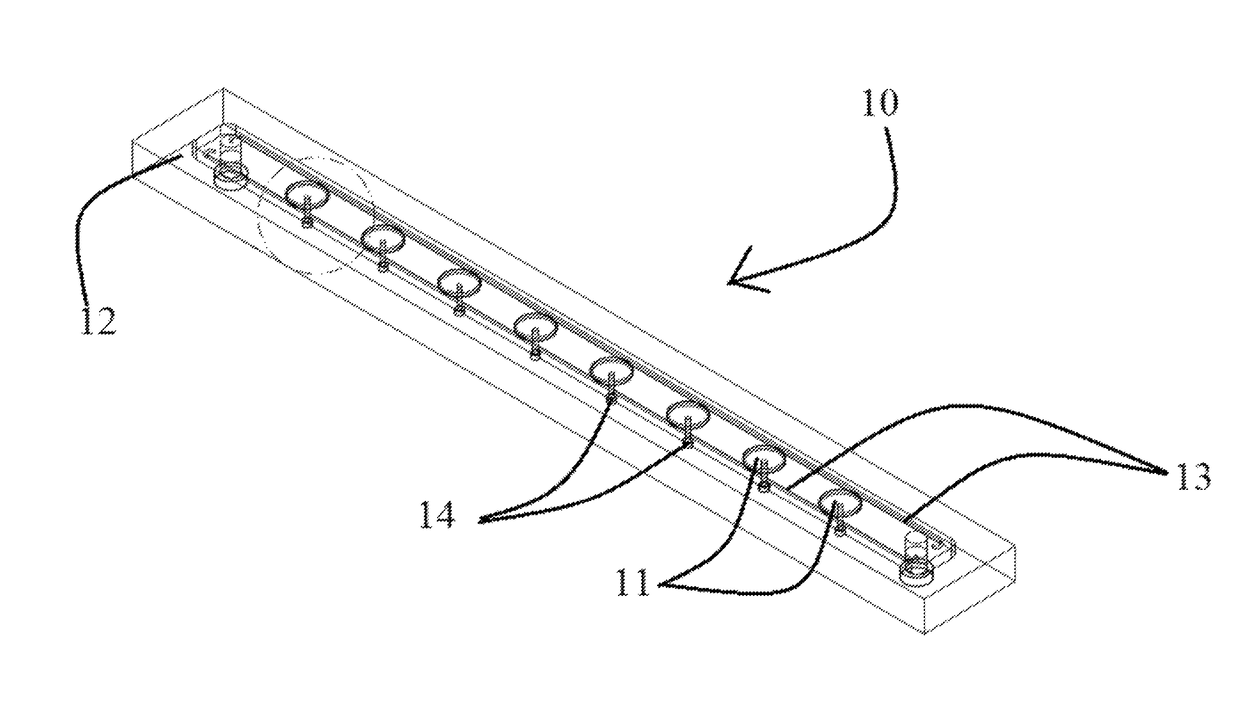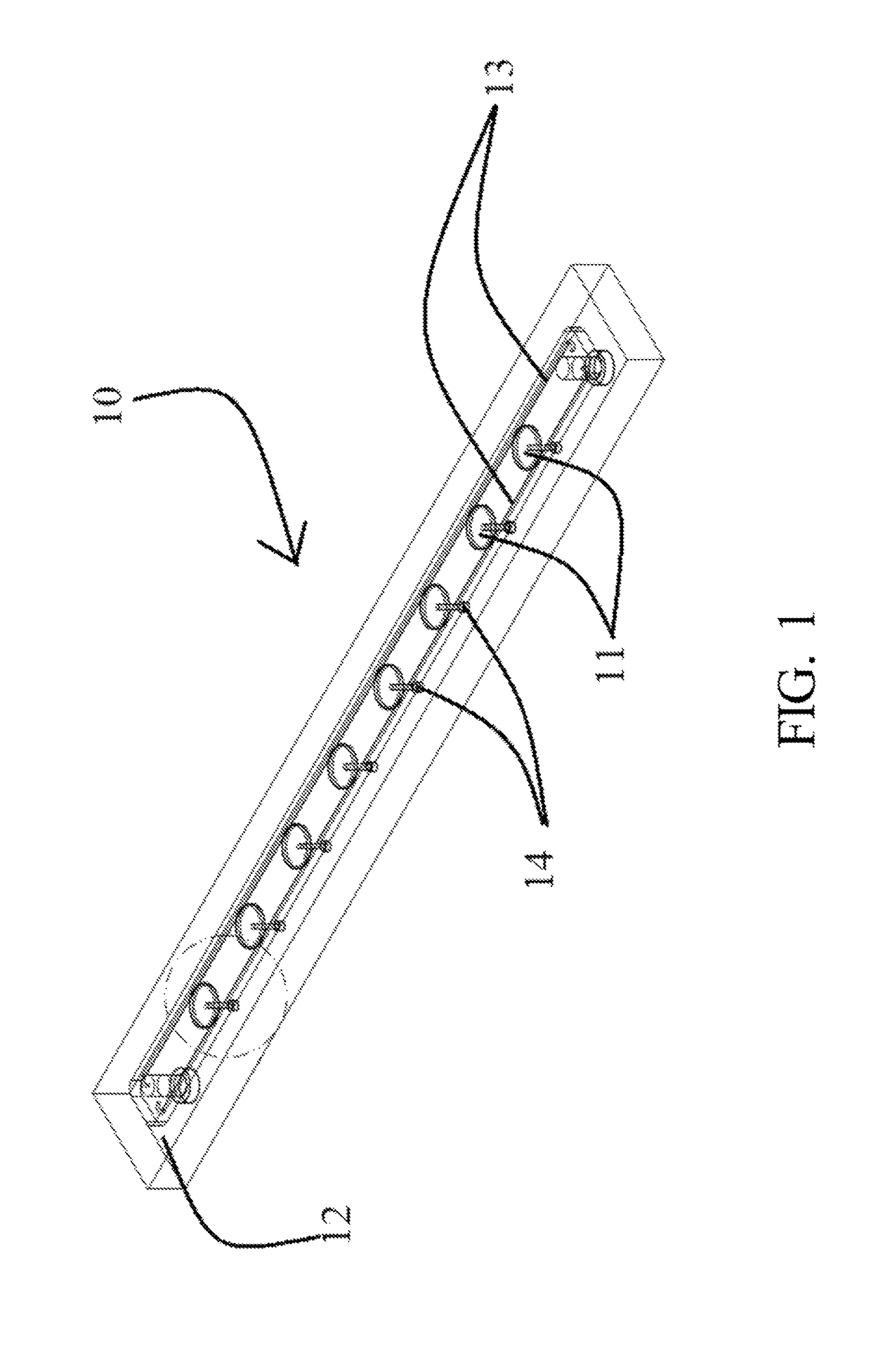Magnetic band and associated methods thereof
a technology of which is applied in the direction of permanent magnets, magnetic bodies, electrical devices, etc., can solve the problems that magnetic band and elastic band have not been used to any great extent together, and achieve the effect of facilitating accessibility and possessing friction resistan
- Summary
- Abstract
- Description
- Claims
- Application Information
AI Technical Summary
Benefits of technology
Problems solved by technology
Method used
Image
Examples
example
[0026]A rubber like elastomer was chosen that was flexible and elastic (e.g. stretchable), and had good gripping quality (sticky). The resin like material was poured into a mold (although it should be understood that injection molding can alternatively be used). Smooth-on material brand was used as the elastomer and placed into the mold. The mold that was used was set to deliver a magnetic band that was approximately 20 inches in length by 3 inches in width, and ¾ inches in depth.
[0027]Two Flexible and durable wires along the length of the unit were used. The wires proved to be flexible but yet durable so that the magnetic band would form to any object it is wrapped around without wanting to go back straight. 16 g galvanized wire was used but it should be understood that other wires gauges can be used.
[0028]Eight magnets were spaced at precise and equivalent distances (the magnets were spaced at about 2.5 inches (7.5 cm) distance from each other so they do not strongly attract each ...
PUM
| Property | Measurement | Unit |
|---|---|---|
| length | aaaaa | aaaaa |
| length | aaaaa | aaaaa |
| length | aaaaa | aaaaa |
Abstract
Description
Claims
Application Information
 Login to View More
Login to View More - R&D
- Intellectual Property
- Life Sciences
- Materials
- Tech Scout
- Unparalleled Data Quality
- Higher Quality Content
- 60% Fewer Hallucinations
Browse by: Latest US Patents, China's latest patents, Technical Efficacy Thesaurus, Application Domain, Technology Topic, Popular Technical Reports.
© 2025 PatSnap. All rights reserved.Legal|Privacy policy|Modern Slavery Act Transparency Statement|Sitemap|About US| Contact US: help@patsnap.com



